From a distance, grassland might look like a simple stretch of green, but this apparently uniform environment conceals a hugely diverse, living world. Plant ecologist Sara Middleton gives us a close-up view of a complex network, and ponders its future under the stresses of climate change.

Despite covering 40 per cent of the Earth’s surface, grasslands are often seen as just green carpets, a homogeneous expanse with not much going on. In fact, if you were to scale up grasslands to the size of tropical forests, plant diversity would rival their tall floristic cousins.
In the last three years, I have come to appreciate how wonderful grasslands are, through my research as a plant ecologist. I intimately follow the lives of about 150 individual plants and record how the environment shapes their life in a grassland drought experiment.
Before engaging in this research, I didn’t know very much about grasslands except that they were nice to gaze out at on long train journeys across the UK and that they had the potential for carbon storage.
During the yearly summer census at my field site at Wytham Woods in Oxfordshire, I have come to learn some fascinating plant life stories. Grassland plants showcase a myriad of survival strategies, from magnificent mimics that play tricks on their pollinators to plants that make a living by befriending bacteria.
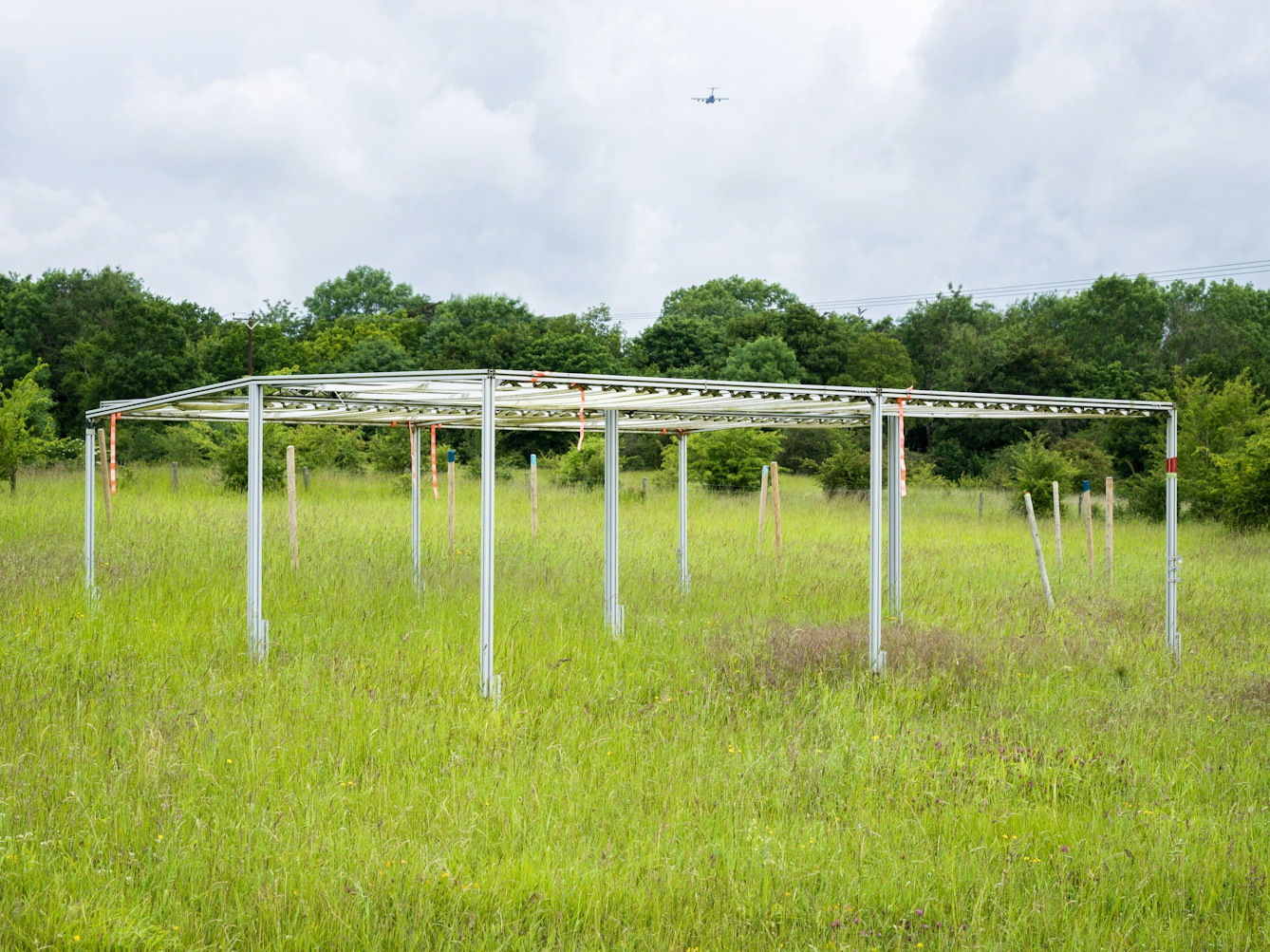
“During the yearly summer census at my field site at Wytham Woods in Oxfordshire, I have come to learn some fascinating plant life stories.”
I learned about most of the 107 plant species at my field site during hours spent lying belly down with a face full of plants, a plant identification book in one hand and a hand lens in the other. At the end of the day, I would review the species of the day and research them online.
Out of the 100-odd plant species at the site, there are two that always put a beaming smile on my face, and I feel humbled to be in their presence: the bee orchid and the common broomrape.
Magnificent mimics
June is the peak blooming period, and the grassland is awash with pinks, purples and yellows. At the start of each field day, I pay a visit to ‘Buddy’, a bee orchid I’ve nicknamed that pops up every June in the same spot.
Bee orchids (Ophrys apifera) are one of nature’s magnificent mimics. Against the backdrop of 50 shades of green are swarms of shin-high spikes with half a dozen bees perched on top. These static, browny-yellow ‘bees’ with outstretched pink wings resemble female bees settling on a flower. A keen male bee comes buzzing in to attempt to mate, only to find that there is no female, but he has ended up pollinating the flower.
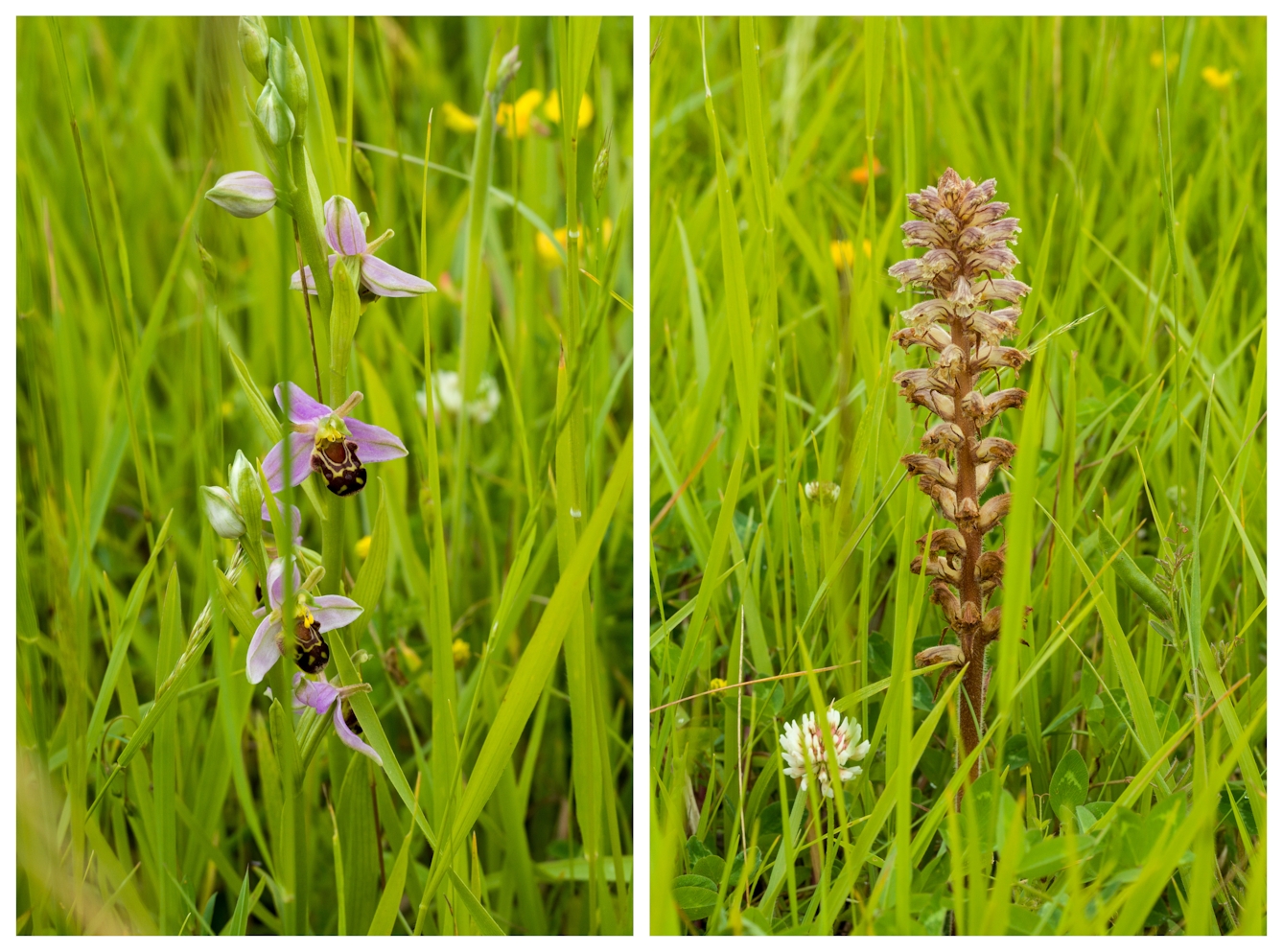
“Out of the 100-odd plant species at the site, there are two that always put a beaming smile on my face, the bee orchid (left) and the common broomrape (right).”
Bee orchids can’t see, so how do they pull off this uncanny resemblance? This sexual swindling trick has been perfected over millennia after a random mutation. Their ancestors relied on bees to pollinate them in exchange for sweet nectar. By chance, some flower forms were more appealing to bees and were pollinated more. Over time, the flower forms that looked more like female bees were more successful at reproduction. In the UK, bee orchids self-pollinate, as the bee species that pollinates bee orchids is not found here.
Each time I see a bee orchid I am in awe by their aesthetic and evolutionary beauty, almost like it is my first encounter with them.
Rule breakers and double agents
Parasites provoke a dual response of disgust and fascination for me. In the parasitic animal world, I despise ticks, mostly from the effort it takes to scan myself for ticks at the end of each field day.
But the parasitic plant world is mesmerising to me. Most plants look green and make all their own food, but some don’t play by these rules. Members of the broomrape (Orobanchaceae) family survive by syphoning off nutrients from neighbouring plants. These ghostly-looking plants stab the roots of a plant host with their haustoria (a root-like structure) and draw out nutrients.
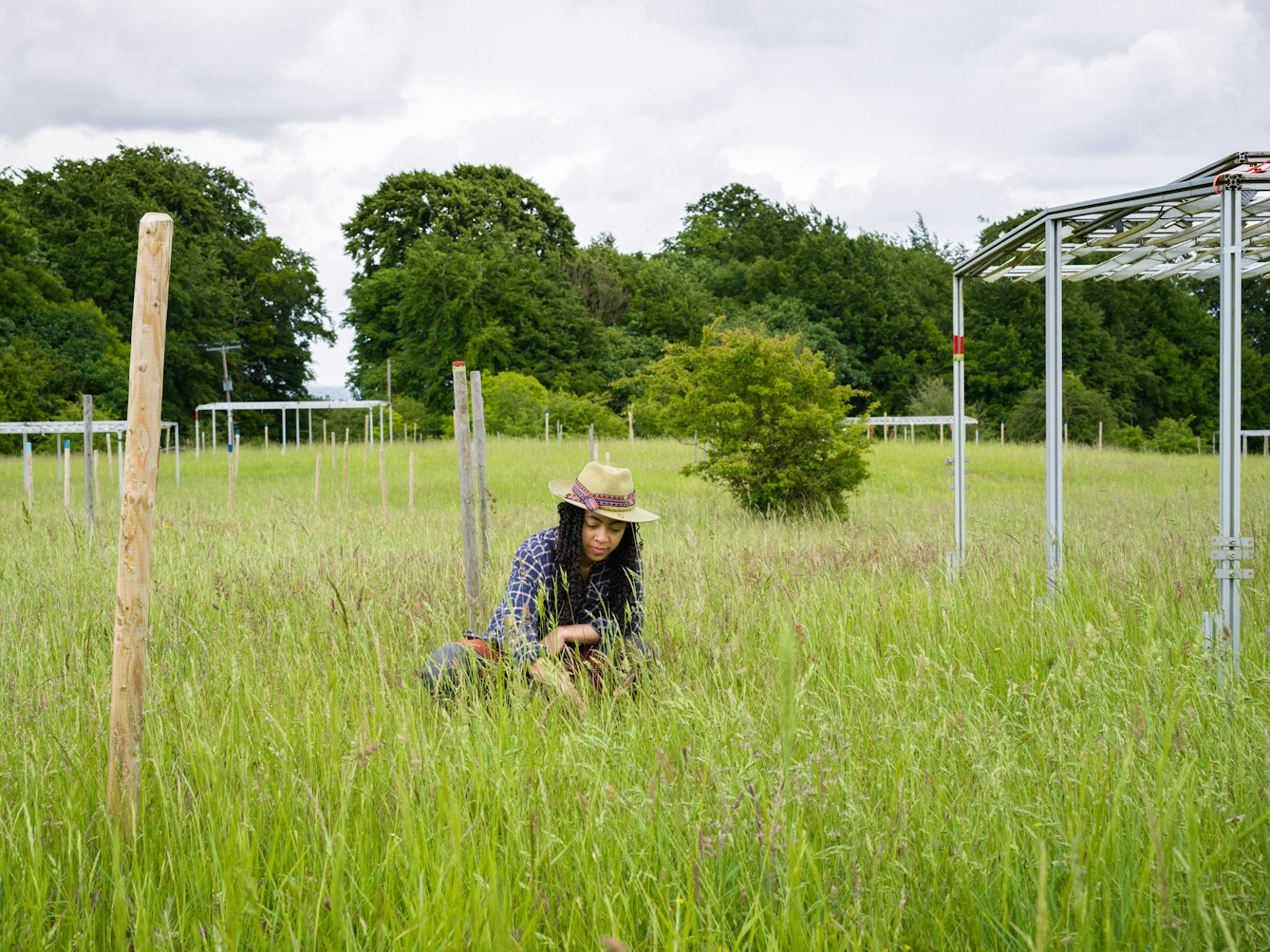
“Each time I see a bee orchid I am in awe by their aesthetic and evolutionary beauty, almost like it is my first encounter with them.”
Some Orobanche have broad plant-host preferences while others are species-specific. The common broomrape (Orobanche minor) has a taste for plants from the legume and daisy family.
Other members of this plant family act more like double agents. They appear to play by the rules, as above ground they are green, because they contain the food-making pigment chlorophyll, but below ground they supplement their nutrition by stealing nutrients from their neighbours.
Some of these double agents, like the yellow rattle (Rhinanthus minor) are also “meadow managers”. They suppress the growth of neighbouring species, particularly grasses, leaving open pockets for other species to grow.
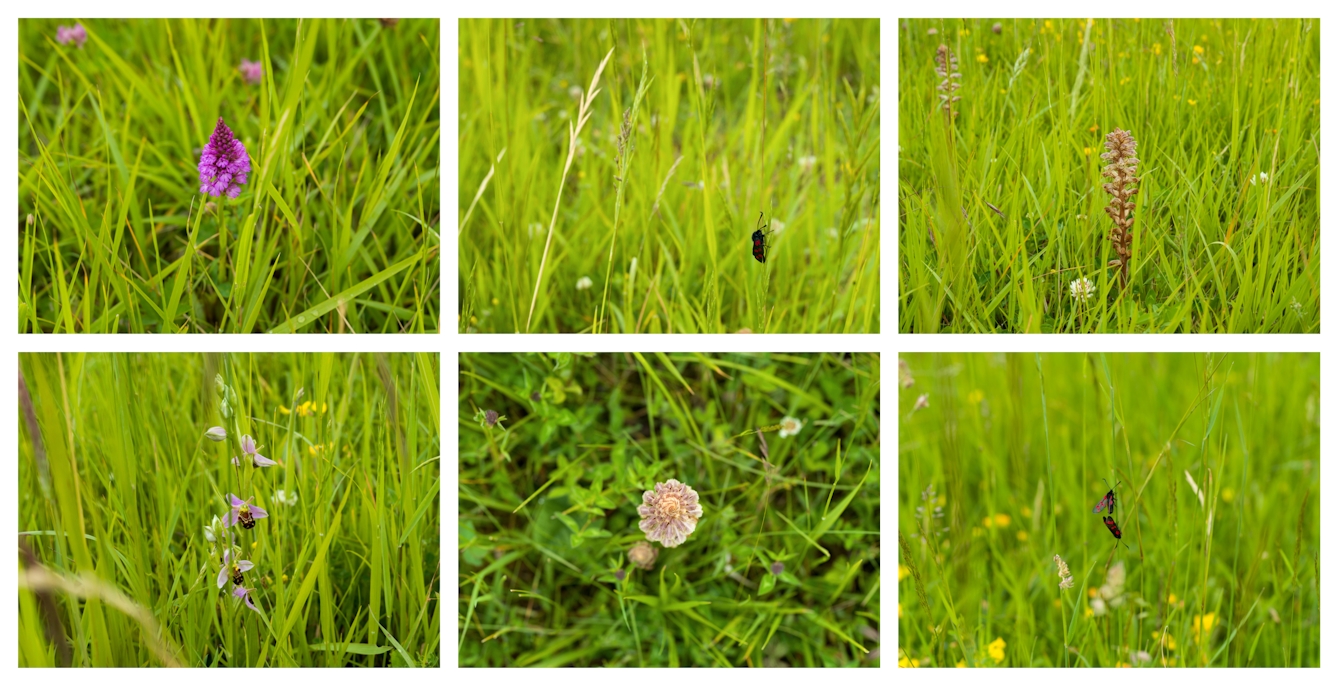
“Another way to survive in challenging environments is to form cooperative partnerships. A lesson I take away from these plants is the importance of collaboration with others from different communities.”
Community collaboration
Another way to survive in challenging environments is to form cooperative partnerships. Plants like clovers are legumes, and they engage in a nutrient exchange by befriending nitrogen-fixing bacteria in their roots. The bacteria, known as rhizobia, supply a legume plant with nitrogen in a bio-available form and in return, the bacteria receive sugars produced by the plant.
Some grasses can make fungi friends below ground. The fungi help them access more nutrients in the soil, provide a shield against pathogens and offer a buffer against stressful situations such as drought. A lesson I take away from these plants is the importance of collaboration with others from different communities.
Shrinking and scrambling
As I criss-cross my field site, pushing a wheelbarrow overflowing with field gear, I occasionally stop and admire all the wonderful ways plants make a living while (mostly) rooted to the ground. Aside from those of bee orchids and broomrapes, there are other survival strategies.
The common centaury (Centaurium erythraea) is a pop-pink petalled plant, able to sense micro-meteorological changes such as an imminent rain shower. They seem to use their weather-forecasting abilities to close their flowers as a protective measure against potential weather damage. Often these plants are a better weather indicator than my phone app!
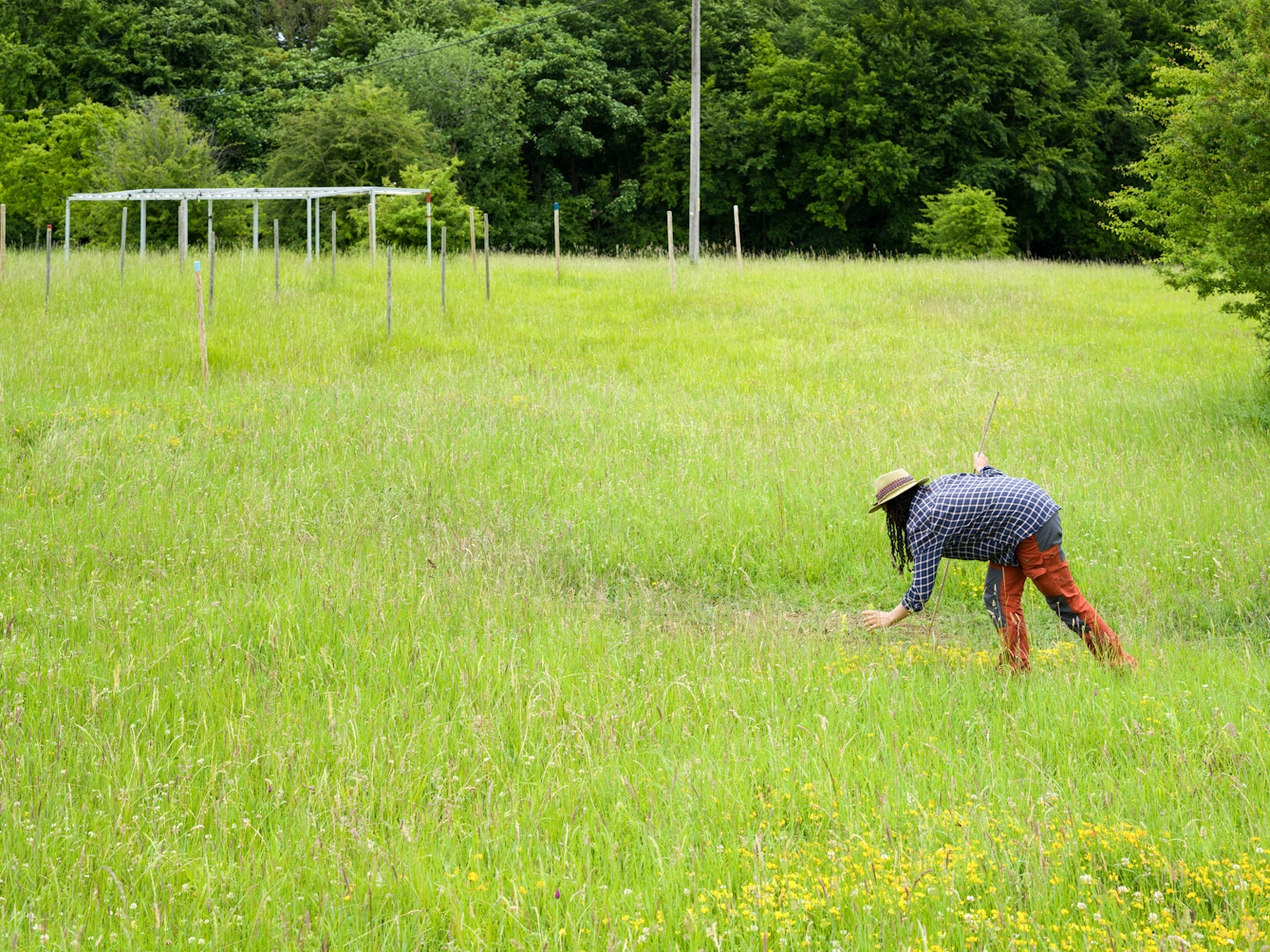
“As I criss-cross my field site, I occasionally stop and admire all the wonderful ways plants make a living”
Several plants can shrink or retrogress in challenging conditions, like drought, as being smaller requires fewer nutrients to wait out the tough times. My study species, a bunch grass called false brome (Brachypodium sylvaticum) does this. I’ve also observed some of the bunches in the drought plots ‘creeping’ a few centimetres each year towards the outer edges of the plots, where conditions are better.
The objective scientist in me can’t wait to do a deep dive into these data points, but the excitement is veiled by both sadness and admiration. Sadness at seeing these living beings scrambling for survival. Admiration at their resilience to adversity.
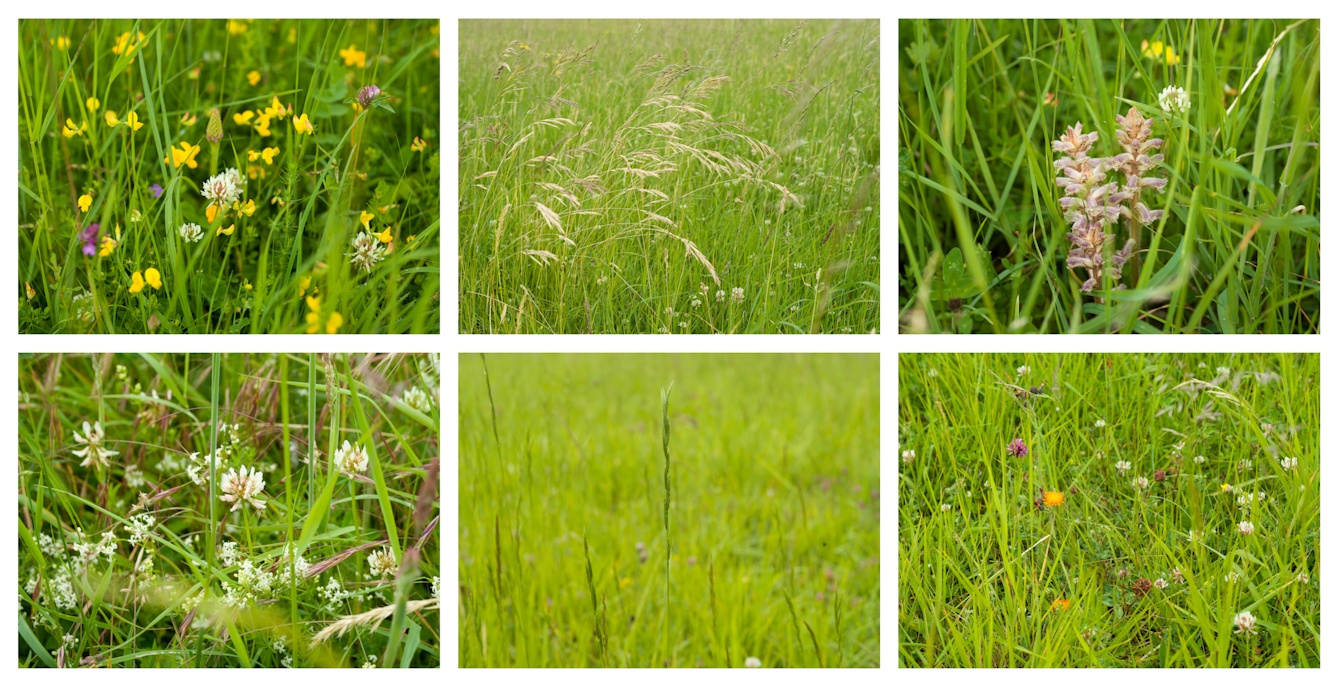
“These 100 or so bunches of grass have taught me not to overlook how much of the environment where we grow up shapes the trajectory of our lives.”
I’ve grown fond of these 100 or so bunches of grass after closely following them for four years. I can even recognise many of them by sight now. They have taught me not to overlook how much of the environment where we are born and grow up shapes the trajectory of our lives.
The unravelling of the green carpet
Walking through grasslands, we are often oblivious to the multitude of partnerships and strategies going on beneath our feet that have been fine-tuned over generations.
To some extent, grasslands are a green carpet: a tightly interwoven network of living strands, a plant community. This fabric of life connects species to each other through complex above- and below-ground relationships.
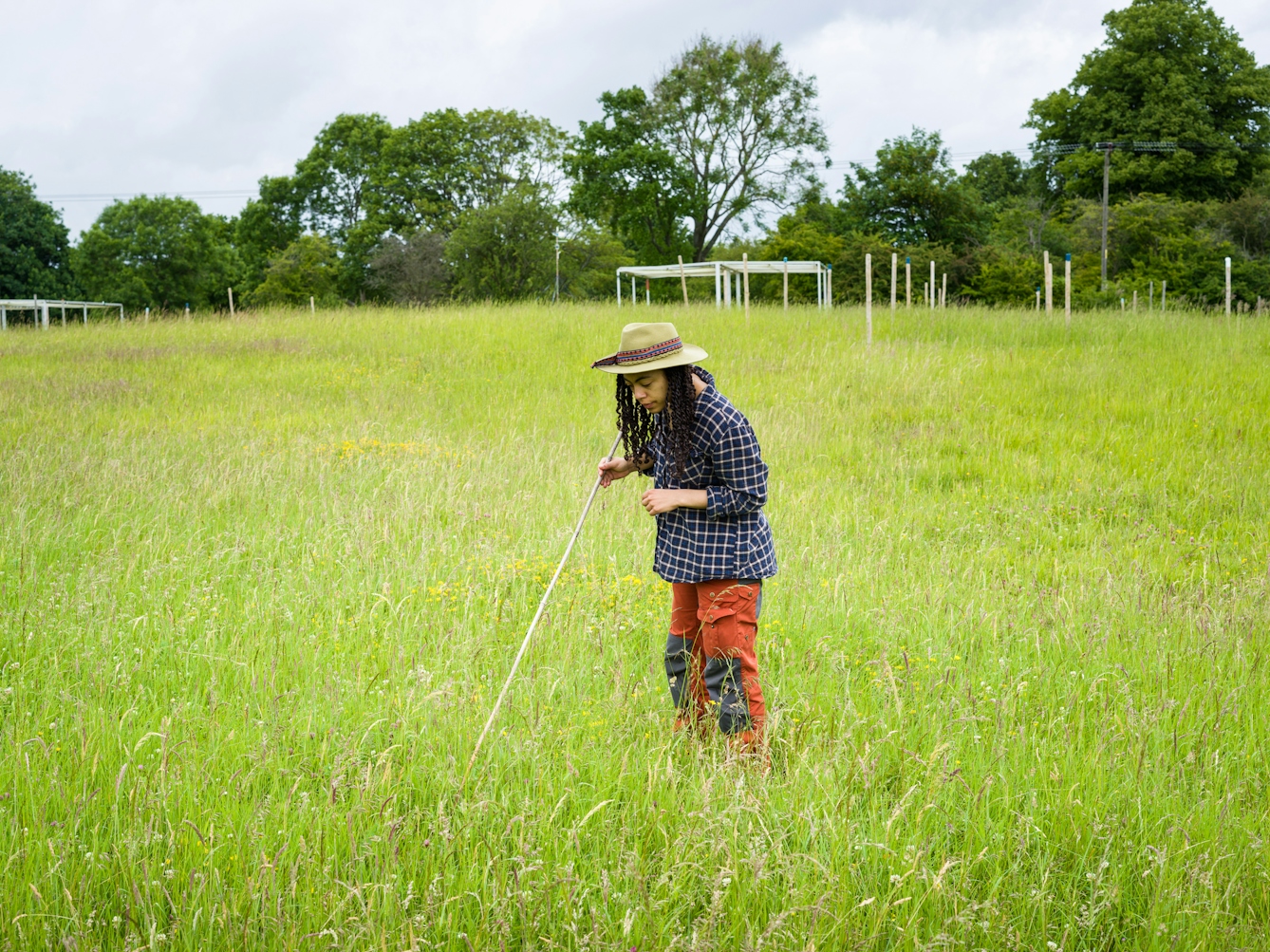
“Through my research, I have recorded the many plant winners and losers in the battle for water. When I think of the wider context of my work, I do worry.”
With environmental change, we are simultaneously pulling the green carpet in multiple directions via extreme weather events and land-use change, while also slowly pulling out threads as species become extinct, creating strains and holes. The carpet can still function with some bumps and holes, but it will look different as the plants that comprise it shift or vanish. Too many changes affect the integrity and resilience of the carpet.
Through my research, I have recorded the many plant winners and losers in the battle for water. When I think of the wider context of my work, I do worry. Many of the UK’s grasslands are already hanging by a thread, and we haven’t experienced the worst of climate change yet.
As the green carpet begins to unravel, will the plant strategies refined over millennia and their stories written into the patterns in the fabric keep up with the pace of climate breakdown? We will need to tread carefully to preserve these plant life stories before there is not much left to salvage.
About the contributors
Sara Middleton
Sara Middleton is a plant ecologist, science communicator and intersectional justice advocate. She is currently a doctoral researcher at the University of Oxford looking at drought impacts on grasslands. Her interests also branch out into examining human-nature relationships, plant awareness disparity, agricultural food systems and raising the profile of historically excluded racial minorities in biology. Her research is funded by the Natural Environment Research Council, with logistical and maintenance support from the Wytham Woods team, Ecological Continuity Trust, and John Fell Fund.
Steven Pocock
Steven is a photographer at Wellcome. His photography takes inspiration from the museum’s rich and varied collections. He enjoys collaborating on creative projects and taking them to imaginative places.

